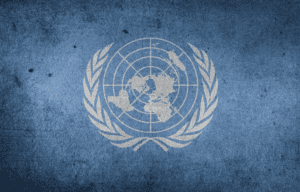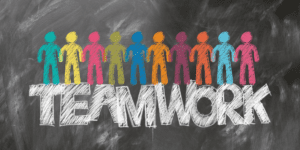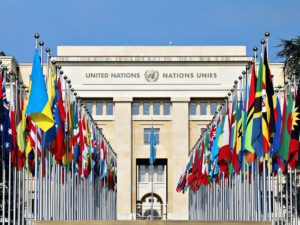The aims of organisations like UNICEF when advocating for child poverty
Raising awareness of child poverty within specific countries requires reaching out to members of the political sphere, the general public, the media and any interested stakeholders such as NGOs, charities, rights campaigners, and cultural leaders. It is primarily about building momentum in a measured and authoritative manner.
How this can most effectively be achieved
Formulating an agenda and galvanising opinion for change relies on a series of research and data collection programmes. These shed light on the conditions in which children live. Evidence backed reasoning should prove more compelling than presenting political or ethical arguments.
The target audience
Initially the UN suggests that it is vital to present data and research findings to a specific audience, for instance, key stakeholders such as politicians, representatives from government organisations, charities, NGOs, as well as cultural and religious leaders. These should include the finance ministry, the national statistics office (NSO), and human rights campaigners.
 How these stakeholders can best be identified
How these stakeholders can best be identified
Identifying the most important stakeholders focuses a campaign. It should rely on a thorough understanding of their potential influence, authority and status. This needs to be set within a general appreciation of how change at a political and community level might be brought about.
The message that organisations like UNICEF are trying to convey
The overriding message needs to be insightful and pragmatic. Essentially it needs to convey the point that action to tackle child poverty is feasible and practical. It is achievable with the right political emphasis. Proposals need to be evidence-based and worthy of endorsement. It is equally vital to reassure stakeholders that future strategies would naturally be collaborative, supportive, data and evidence-led, and come with built in popularity in terms of their political appeal. Above all, advocacy needs to be formulated and put forward in a plausible and reasonable manner.
The best advocates for this type of campaign
Identifying the most appropriate advocates to approach potential stakeholders is central to the viability and ultimate success of any campaign. There will be statistical experts, possibly within the NSO, or from the world of academia, whose authority could add credence to any proposals, for instance in assessing and discussing the technical feasibility of potential programmes.
Representatives from the finance ministry, NGOs, and charities may draw upon their collective experiences to add weight to any proposals.
When and where it is best to make approaches
It is crucial to identify appropriate opportunities and points of access to key stakeholders. These could entail political meetings, board meetings, or a rally. Interest from the general public, or from the media, can quickly evolve into political pressure and bring with it a sense of expectation.
Evidence which NGOs and charities can present
A starting point can be close reference to the UN’s Strategic Development Goal (SDG) indicators. Representation relies on building mutually respectful working relationships with appropriate stakeholders, such as officials within the NSO and central government. By centralising child poverty within the SDGs, advocates are likely to ensure that proposals and appeals are presented within a respected political and ethical framework.
- End Poverty in all its forms.
- End hunger by establishing food security, better nutrition, and sustainable farming practices.
- Highlight and ringfence the importance of wellbeing and good health for everyone.
- Promote the benefits of good-quality education for all children and young people, as well as adult education programmes.
- Empower girls and women through programmes of gender equality.
- Implement appropriate and sustainable water supplies and good sanitation for everyone.
- Implement a sustainable, dependable and affordable electricity supply for everyone.
- Promote the benefits of productive employment through inclusive economic growth.
- Establish resilient infrastructure, appropriate industrial development and innovation.
- Reduce inequality, both at a district level and on a global scale.
- Promote the benefits of safe and sustainable cities, towns and communities for all people.
- Ensure that agricultural production and consumption are sustainable and equitable.
- Implement measures to tackle the pressing threat of climate change.
- Implement sustainable measures to conserve and manage the world’s oceans and seas.
- Conserve, restore and manage sustainably the world’s ecosystems, to ensure biodiversity and bio-preservation, together with appropriate forestry and land use.
- Promote justice for all by enshrining inclusivity and accountability within judicial systems.
- Ringfence and re-energise the Global Partnership between nations for sustainable development through the above SDGs.
 What NGOs and charities need to do to make approaches as advocates for children living in poverty
What NGOs and charities need to do to make approaches as advocates for children living in poverty
Given the context afforded by the SDGs, NGOs and charities need indisputable, region specific advice and evidence presented by a local expert on child poverty. This data can be put forward to the NSO.
How the advocacy process begins
Strategic planning involves target setting and drawing up a list of potential outcomes. If plans and goals are enshrined within the framework of the SDGs they are likely to have more political impact. Meetings should be arranged with the stakeholders above to discuss goals. A formulative plan of action can be devised to address poverty tied in with SDG reporting. A meeting with representatives from the NSO would be important and it may be beneficial to set up countrywide workshops and seminars on a potential programme. Proposing a review scheme is also vital.
The best way to assess the impact and progress of child poverty advocacy
Monitoring, reviewing and modifying any programme and planning is an appropriate way to ensure accountability and give the whole procedure a sense of integrity. Proposals from meetings with stakeholders and officials need to be ratified and publicised, and ongoing concerns need to be robustly addressed.
 Conclusion
Conclusion
If the above steps can be adapted and imaginatively implemented, the UN considers that advocacy for child poverty can become genuinely transformative. Advocacy can cut through bureaucracy to represent in an appropriate and effective manner those hundreds of millions of young people who continue to live in abject poverty across the world.



